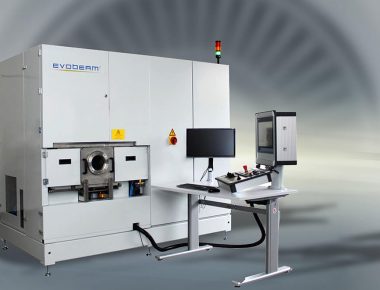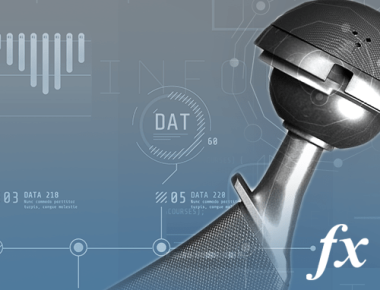
Electron Beam Surface Treatment
Surface treatment with electron beam technology offers a versatile range of methods:
hardening, surface structuring, engraving, and polishing.
All of them can be applied in a very accurate and efficient way. Furthermore, these can be integrated into one system, enabling utmost utilization of equipment.
The workpiece surface is the physical interface or boundary to its surroundings. This could be environment (e.g., gas, UV-light, liquids, humidity, radiation, aggressive solvents, etc.) or other materials (e.g., metals, non-metals, etc.).
It improves the corrosion resistance, hardness, and appearance of the surface on small or large areas on the workpiece.
Beam technology modifies this boundary precisely and repeatably.

Electron Beam Surface Treatment Principle
Depending on the application and the involved material different effects happen.
Hardening:
The beam heats the boundary up above the austenitic temperature and heat conduction into the surrounding cooler mass rapidly cools it. This self-quenching does not require any other coolant. The high power-density of the beam locally creates the necessary temperature gradients. It is as well possible to remain below the melting point and impose structural changes while the workpiece surface stays in solid state.
Remelting:
The beam heats the boundary above the melting temperature and modifies the alloy or disperses unsolvable hard particles such as WC.
Surface structuring:
The beam melts the material to defined depths and forms grooved patterns. These freely shapable patterns with a defined surface roughness are i.e., essential to medical applications to minimize a bacterial film.
Engraving:
The precisely controllable beam engraves the workpiece either as main process step or after completion of another beam machining process. The engraving can be exactly positioned and marks the workpiece in a visible and machine legible way (e.g., data matrix, etc.)
Polishing:
Mechanical polishing of low heat conducting materials such as titaniummay lead to burnouts. A beam yields positive results by melting only the boundary and controlling as well as improving the smoothness, glossiness and hardness.
Electron Beam Surface Treatment Features and Benefits
Electron beam surface treatment provides excellent options for modifying the properties of the surface.
- High-Vacuum conditions of around 10-4 mbar in the working process chamber:
The vacuum has a positive impact on the molten material by degassing and significant reduction of potential pores or other impurities in the melting zone.
- Extremely versatile and controllable beam properties:
Due to precise control of the focusing level, beam power intensity, quasi inertia-free deflection, the electron beam can be precisely adjusted and be accurately moved across the surface area. This is essential for controlled and repeatable modifications of the structure and metallurgical properties.
- Fully automated surface treatment:
Electron beam surface treatment machines are fully automated. They enable precise repeatability and full traceability of relevant surface treatment parameters during the modification of the surface itself per workpiece. The surface treatment process can be securely controlled and documented. This is essential for validated processes i.e. in aerospace industry. This does not only apply for the production of original equipment for aviation and space crafts, but as well as for the MRO operations (Maintenance, Repair, Overhaul). Electron beam technology facilitates the surface treatment process due to extremely low heat input and low distortion of the component, while producing predictable surface properties.
- Vacuum chambers available in different sizes:
Evobeam electron beam surface treatment machines have vacuum chamber sizes which are adapted to the specific application requirements to minimize volume and, thus, evacuation pump times. This reduces the overall cycle time for surface treatment and improves overall productivity.
Electron Beam Surface Treatment Additional Information
The controlled and precise modification of surfaces with electron beam technology, gained attention in recent years.
Aside the applications above, especially the medical sector or other industries with extremely demanding hygienic standards benefit from surface treatment with electron beam technology. Here, the focus is on avoidance of colonization of surfaces with bacteria. For prostethises or implants, optimized surface structures for excellent bonding with bone tissue are crucial.
We can supply the optimum solution for the specific surface treatment applications in vacuum for high production rates: cost-effective, fast, versatile and with highest accuracy.
Electron Beam – Systems & Options
Versatile scope of electron bram machining solutions supported by our scpe of services

